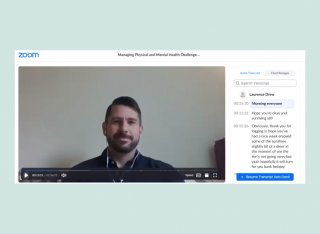
Melanie Blevins
Academic and research departments
School of Veterinary Medicine, Faculty of Health and Medical Sciences.About
Biography
Originally from Virginia, Melanie has a BSc from the College of William and Mary. She attained her veterinary degree from the Royal Veterinary College in 2007 and spent three years working in mixed practice in the UK where she developed an interest in surgery. In 2010 she moved into solely small animal practice as a surgeon and head veterinarian, achieving a General Practitioners and Post Graduate Certificate in Small Animal Surgery in 2017.
Melanie was appointed as Teaching Fellow in Small Animal Surgery at the University of Surrey in December 2017.
University roles and responsibilities
- Year Lead: BVMSci Year 4
- Module Lead: VMS4001 Fundamentals of Veterinary Practice III
- Academic Integrity Officer
My qualifications
Postgraduate Certificate in Small Animal Surgery
Affiliations and memberships
Teaching
As the Teaching Fellow in Small Animal Surgery, Melanie coordinates theoretical and practical surgical teaching across the course, particularly across the clinical years. Melanie is responsible for the organisation and delivery of teaching at a Neutering Clinic providing invaluable practical teaching for fourth year students as part of her role as module lead of VMS4001: Fundamentals of Veterinary Practice III: Anaesthesia, Surgery and Patient Care.
Publications
An entrustable professional activity (EPA) model was used to assess the anaesthesia and surgery competence of year four students during elective neutering procedures over three academic years (Cohort A, Cohort B and Cohort C). Two competence thresholds were defined by an expert panel, the minimum acceptable standard (MAS) and the standard expected at the start of final year rotations (SFR). The assessment scheme performed as expected, median level of supervision achieved by students either matched or exceeded the SFR for all EPAs except one which matched the MAS. Semester of assessment was associated with student performance, with more students in Semester 2 achieving the SFR. In the EPAs assessing pain management, documentation and patient discharge, Cohort A was associated with reduced student performance, this could be explained by changes in the delivery of teaching in earlier parts of the program enhancing performance in subsequent academic years. For all EPAs combined and individual EPAs (3,5,6,8 and 9) student performance at the SFR was associated with academic year. For all EPAs assessed combined and EPAs 3,8 and 9 there was a reduction in the proportion of students achieving the SFR threshold in each successive year. At the MAS the only association for the combination of all EPAs was with Cohort C. This progressive reduction in performance may have been related to the negative effect of decreasing time spent at the neutering clinic and loss of feedback opportunity outweighing the positive effects of increased staff:student ratio and improvements in the preparative phases.
Objective To determine whether final year veterinary students take longer to perform endotracheal intubation than qualified veterinary surgeons. Study Design Observational cohort study Animals A total of 38 healthy mesocephalic dogs undergoing general anaesthesia for a clinical purpose unrelated to this study. Methods Time to successful endotracheal intubation, measured from termination of intravenous induction drug administration to confirmation of endotracheal intubation, was recorded for two groups: final year veterinary students (Group S) and qualified veterinary surgeons (Group V). Animal age, breed and anaesthetic induction agent were also recorded. Following normality testing the groups were compared for each variable using the student’s t test or Mann-Whitney U test where appropriate. The level of significance was defined as p < 0.05. Timed data are presented as median and interquartile range (IQR). Results Time to successful intubation was 54.2 (31.3) seconds in Group S and 11.7 (8.5) seconds in Group V, the difference being significant (p < 0.001). There was also a significant difference between groups for animal age (p = 0.036) but not for breed (p = 0.573) or induction agent (p = 0.239). Conclusions and clinical relevance Veterinary students take longer to achieve successful endotracheal intubation of anaesthetized healthy dogs compared with qualified veterinary surgeons. To mitigate any additional risk of dogs developing hypoxaemia, it is recommended that a 55 second time limit is set after which the supervisor intervenes and takes over the intubation procedure. Preoxygenation may be used as an additional a mitigation strategy.
